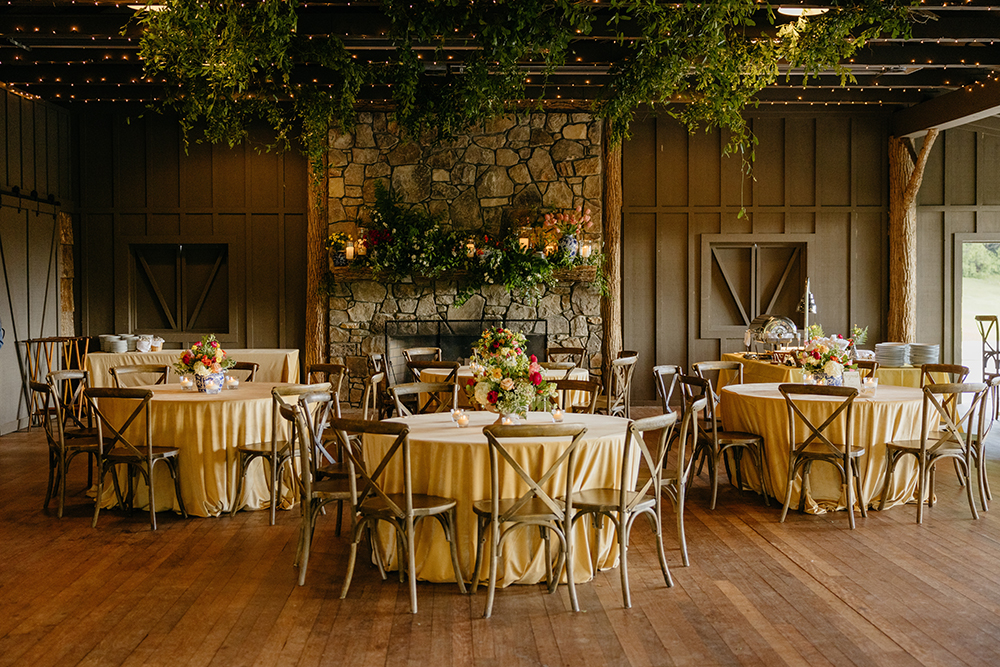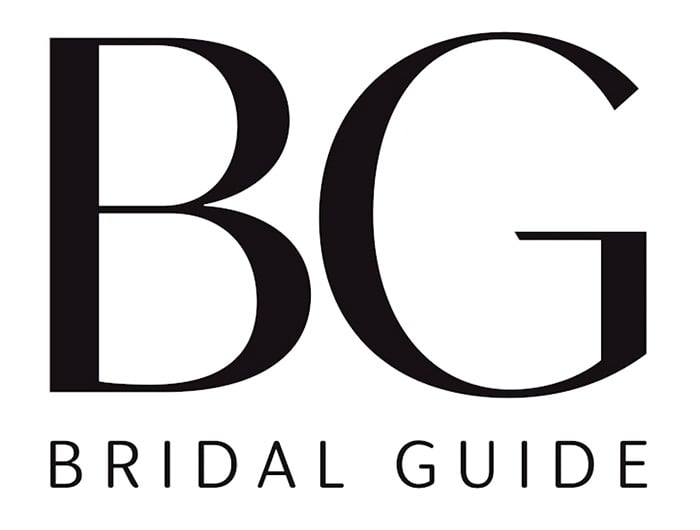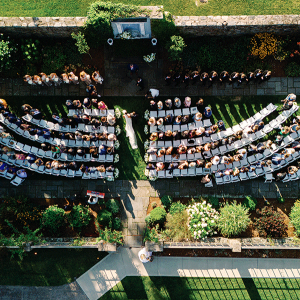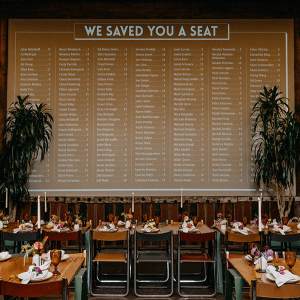When you think of wedding reception design, many detailed images may come to mind — elaborate floral arrangements, unique chair backs, proper place settings, customized welcome signs, and more. But the design element that has the greatest impact on how your event runs is seemingly the simplest — the layout.

Photo: Julia Wade
Your wedding reception layout affects the flow of movement, smoothness of transitions, conversations among attendees, and the perspective you and your guests have on the night. A good reception layout creates a seamless experience, enhances guest engagement, and sets the foundation for a trove of memories to be created. A bad reception layout could turn into a disastrous evening. To help you decide on the best reception layout for your wedding, we’ve asked top wedding experts for their advice. Here’s what they had to say:
"When thinking about design, my first step is always determining the floor plan. While many couples like the idea of all-round tables, I find mixing in different shapes, such as rectangles, squares, and ovals, can create a lot of interest without major added dollars. It allows you to bring in a variety of tables made of different materials like wood or mirror vs. a landscape full of linen. It also allows you to have fun with your decor and centerpieces in a linear way, in addition to the old standby of a classic centerpiece on a round table." —Michelle Vining, LOLA Event Productions
"Start with you! Your wedding is ultimately about you and your partner. We recommend starting your reception layout with where you and your partner will sit. Do you want intimate moments for just the two of you during the reception? Then, a sweetheart table is the way to go. Alternatively, do you want to be constantly surrounded by your friends and family, since you're sharing this day with them? Then a head table is a better option. Asking your partner what they envision and deciding how you two will be seated can anchor the rest of your reception layout." —Randi Bushell, Merri
"Make room for movement by choosing appropriate chairs and tables for ample walking space. Whether it be standing in line for a vodka soda or attempting to visit with a family member across the room, sufficient space between each table is crucial. Keep your guests away from pushing chairs around and invite them to the dance floor with ease." —Katy Padilla, Scarlet Rose Events
"Another thing to consider is the line of sight. How easy is it for guests sitting at the table to see the dance floor? Is there a pillar blocking their view? Or even another table. It's not always avoidable, but staggering the tables will help improve the line of sight for a larger percentage of your guests." —Keith Willard, Keith Willard Events
"Location, location, location! Cake table location, that is. Cake table location isn't something often thought about, but it can be an important detail to consider. We often place wedding cakes as focal points of the reception, on stages, in the center of the dance floor, and at the front of the room. Each of these are fine choices, but there are additional factors to consider. For example, we have had cakes placed on stages with speakers where booming vibrations have caused toppers to fall. We had a cake placed on a table near the big screens that, when raised, caught on the table, causing an unfortunate situation. Additionally, when cakes are placed in the center of the room or directly in the flow of traffic into the reception, particularly receptions where children are invited, the cake table cake gets bumped, causing toppers to fall and damage the cake or toasting flutes to fall and break." —Janette Stenstrom, All Things Cake
"Couples should also consider the needs of any elderly or physically challenged guests. Will there be space for wheelchairs to move between tables, and if not, how can seating be arranged to accommodate those kinds of needs? Putting in extra consideration will make for a smooth reception and make those guests feel seen and appreciated." —Anna Kimbro, Twickenham House and Hall
"If your venue has an indoor/outdoor option, you might have to plan for both setups. Keep that in mind when thinking about everyone you have coming including attendees and your vendor team. If your room ends up too cramped, it just hinders everyone from moving around well and can cause traffic jams while getting in and out of their seats." —Jen Sulak, Weirdo Weddings
"Daylight versus night. Being in South Florida, floor-to-ceiling windows facing the ocean are usually a big selling point for couples looking for a venue. What couples need to fully understand is that once the sun goes down, so does the ability to see the ocean from the venue. If it's during the daytime, the couple or the band/DJ should be set up in front of these windows so that guests can take in the beauty without having to adjust their seats to then check out the couple or band/DJ." —Keith Willard, Keith Willard Events
"When in doubt, lay it out. Your venue manager has likely seen many different guest counts and floorplan options in their space. Don't hesitate to ask them what layouts have worked well in their space or if they have any rules or requirements. They can provide you with different floorplan options or a diagram of the space for you to build your own in tools like Merri. Visualizing the layout of the space can help you plan the flow of your event, make design and decor decisions, and ultimately feel confident in the decisions you are making for your reception." —Randi Bushell, Merri
There's no one-size-fits-all model for the perfect reception layout — it's important to tailor yours to your space, the needs of your guests, and the details you want people to focus on. In the end, the best reception layouts are the ones that go largely unnoticed by guests. They lack obstacles, create ease of movement, and direct attention toward the important events of the evening.







